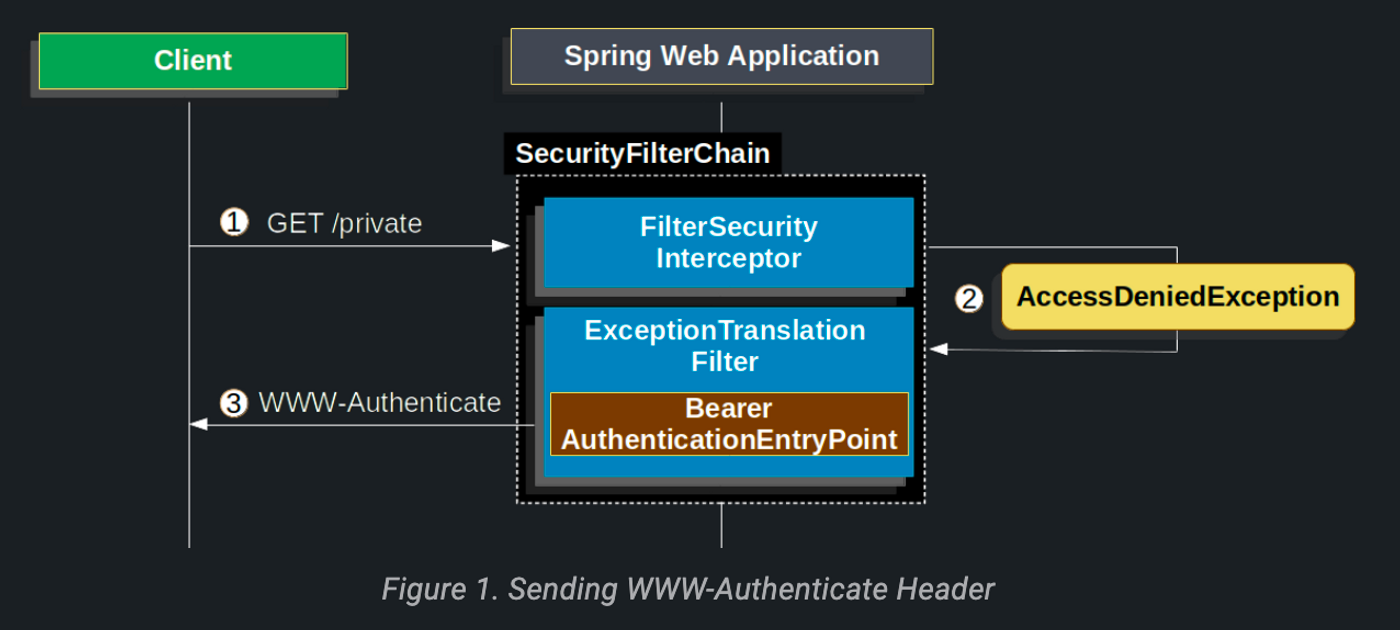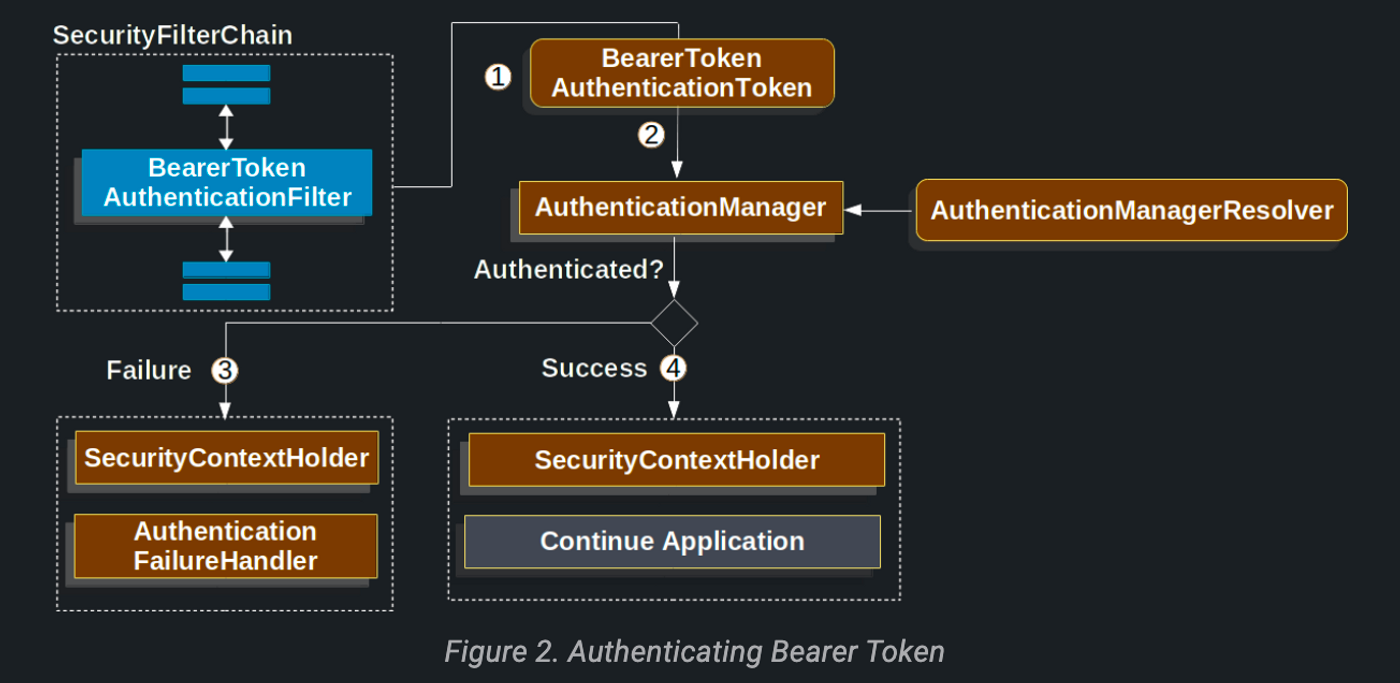TIL
OAuth2 Resource Server
스프링 시큐리티는 두 가지 방식의 OAuth 2.0 Bearer Token 엔드포인트를 지원한다.
- JWT
- Opaque Tokens
이 기능은 애플리케이션이 권한 관리를 authorization server(ex. Okta or Ping Identity)에 위임한 경우 유용하다.
WWW-Authenticate Header
- Spring Security 내에서 Bearer 토큰 인증이 어떻게 동작하는지 살펴보자.
- 아래 그림은
SecurityFilterChain다이어그램이다.
- 먼저 사용자가 인증이 필요한
/private리소스로 요청을 한다. - Spring Security의
FilterSecurityInterceptor는 인증되지 않은 요청이 거부되었음을AccessDeniedException을 던짐으로써 나타낸다. - 사용자가 인증되지 않았기에
ExceptionTranslationFilter는 인증을 시작한다.- 설정된
AuthenticationEntryPoint는 WWW-Authenticate 헤더를 전송하는BearerTokenAuthenticationEntryPoint인스턴스다.- 클라이언트가 WWW-Authenticate 헤더를 받으면 Bearer 토큰으로 다시 시도해야 한다는 것을 알 수 있다.
- 설정된
Authenticating Bearer Token

- 사용자가 Bearer 토큰을 보내면
BearerTokenAuthenticationFilter가HttpServletRequest에서 토큰을 추출하여Authentication의 한 타입인BearerTokenAuthenticationToken을 생성한다. - 다음으로
HttpServletRequest는 사용할AuthenticationManager를 결정하는AuthenticationManagerResolver로 전달된다.BearerTokenAuthenticationToken은 인증되기 위해AuthenticationManager로 전달된다.- 어떤 AuthenticationManager를 쓸지는 JWT를 쓰냐, opaque 토큰을 쓰냐에 따라 다르다.
- 인증이 실패하는 경우
SecurityContextHolder가 클리어된다.AuthenticationEntryPoint가 호출되어 WWW-Authenticate 헤더가 다시 전송되도록 트리거한다.
- 인증이 성공하는 경우
SecurityContextHolder에Authentication이 설정된다.BeforeTokenAuthenticationFilter가FilterChain.doFilter(request, response)를 호출하여 애플리케이션 로직이 계속되도록 한다.